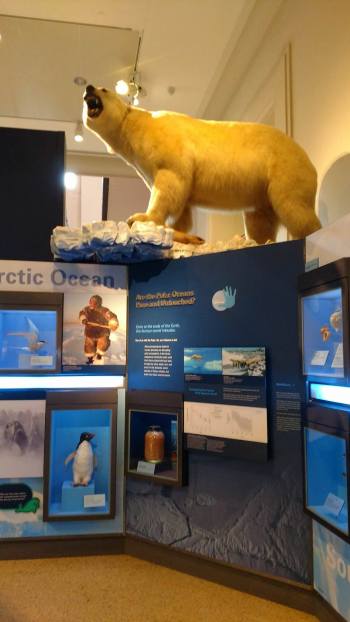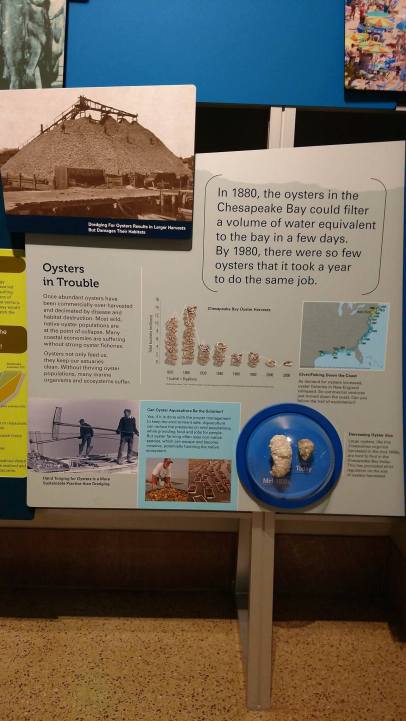The National Museum of Natural History is truly a kid-centered museum. The walls are covered in bright colors and interactive displays. A large whale hangs high up over the heads of visitors while a giant polar bear looks on from the periphery. The length of a giant squid takes up nearly half of a gallery space. As we were shown around the museum, kids bustled around us shouting things like “I wanna see the shark!” and asking questions like “Do whales live in the ocean?”

A large polar bear looks on from the Oceans Hall
What struck me at the museum was that the NMNH not only provided scientific information, but sought to inform the choices of the public. Many panels told visitors explicit steps that they could take in order to preserve our world as seen below. The photo below shows such a panel in the Oceans Gallery. This approach was even seen in the museum’s cafeteria where trash cans were labeled as “compost,” “recycle,” and “landfill.” I like museums that provide practical information in addition to more abstract and general information.

Panel in the Oceans Hall that provided visitors with practical steps to protect our earth
In many instances, the museum used great visual resources to help drive these points home. I was drawn to an oyster exhibit found in the Oceans Hall. A brightly colored panel with great graphs told the story of the Chesapeake Bay’s dwindling oyster population. As this is the main focus of my museum, I knew most of the information. However, actual oysters were utilized in the small exhibit that helped teach a subject that many kids might not be familiar with. These approaches seemed to be successful since the museum was packed full of families with young children and school tour groups.

Oyster exhibit in the Oceans Hall